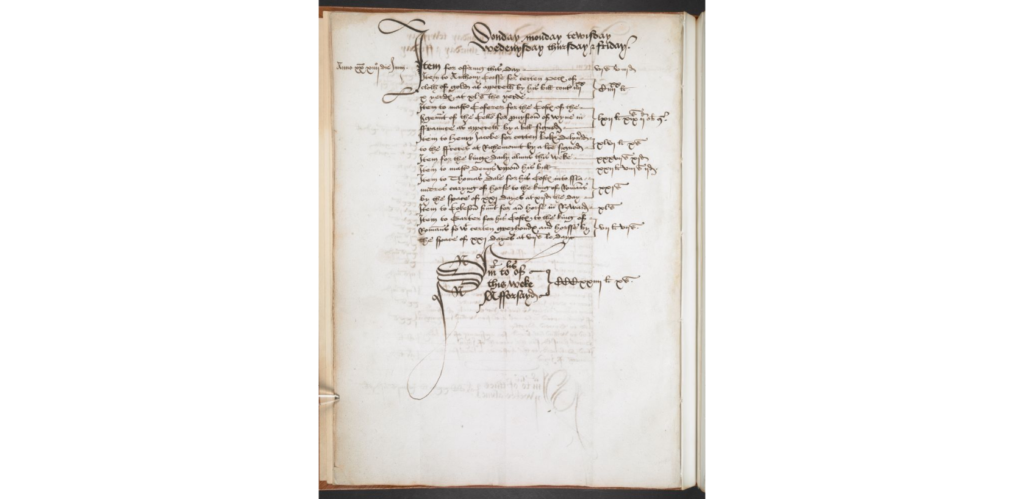These self-guided research tasks have been designed for Key Stage 4 and 5 students (aged 14-18) to develop their historical research skills focusing on using databases, basic palaeography, historiography and synthesising primary source evidence.
We recommend that the introductory PowerPoint and the Simple Guide to Tudor Money is viewed before starting any of the research tasks.
- Task 1 is focused on historiography and acts as an introduction to the views of key historians on Henry VII’s reign.
- Tasks 2, 3 and 4 focus on using the Tudor Chamber Books database to investigate Henry’s spending. These can be done sequentially or as stand-alone research tasks.
- Task 5 is an additional exercise which brings together the research that students have done and allows them the opportunity to develop their own argument drawing on the historiography and primary source investigations they have carried out.
We have developed PowerPoints with audio recordings to assist students with terminology and context for tasks 2, 3 and 4 and there is a Glossary and Helpful Hints sheet available. Each of the PowerPoints with audio files are 1 to 2 minutes in length in total, please watch them in the ‘slideshow’ view.
We would welcome feedback on these from teachers: contact@tudorchamberbooks.org
Introduction to the Tudor Chamber Books
Glossary and Helpful Hints
Investigation 1: Historians on the importance of money in the reign of Henry VII
Investigation 2: Henry VII’s spending on ‘bling!’ (and other material things)
Investigation 3: Henry VII’s use of ‘feudal’ dues and wardships
Investigation 4: Henry VII’s spending on security and the case of Perkin Warbeck
Investigation 5: What role did money play in securing the reign of Henry VII?
Palaeography
This is a standalone task, looking at how to read the original chamber books. There is an introduction (split into 3 parts, about 5 minutes each), followed by a practice task. Please view the powerpoints in ‘slideshow’ view for the audio to run automatically.
Practice Task: A page from the Chamber Books (1505). Answer: here

